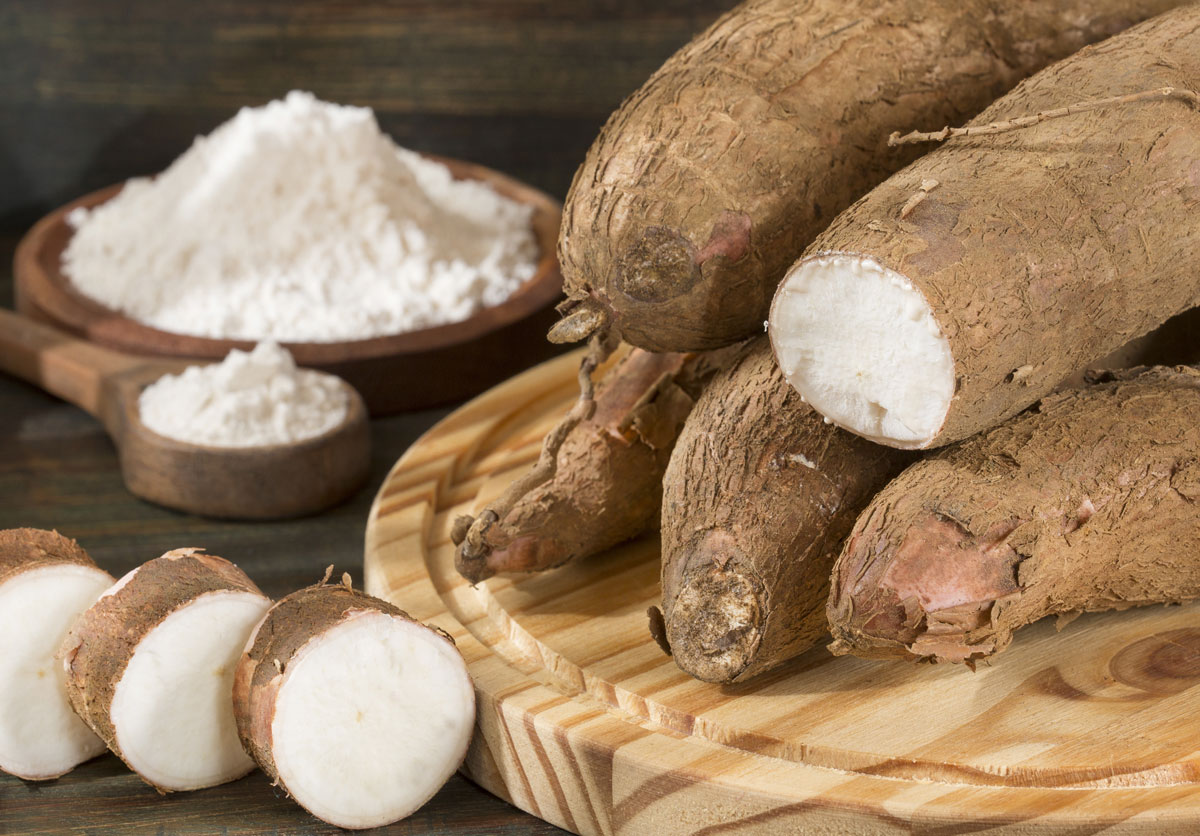Pudding, or maybe boba tea, typically comes to mind when we hear the word “tapioca.” While those are two of the most common uses for tapioca, its also become a fairly popular contender in the gluten-free flour aisle, and with good reason. Just like gluten, Tapioca is great for adding texture to both sweet and savory dishes. Youll often come across it as a component in gluten-free and paleo baking flour mixes.
Its similar in appearance and use to cornstarch. However, unlike cornstarch, which has a pretty clear-cut name indicating what its made of, tapioca is not made from some elusive tapioca plant. Its made from a South American vegetable called cassava, and the name is derived from the Tupí word for starch. And starch is exactly what it is. What are this starchs best uses? Is it interchangeable with cornstarch, and how does it fare from a nutrition standpoint?
However, tapioca is the starchy liquid that’s extracted from ground cassava root. Starchy liquid is squeezed out of ground cassava root. The water is allowed to evaporate, leaving behind the tapioca powder, which can then be made into flakes or pearls.

How is tapioca made?
Tapioca is made from a starchy vegetable called cassava, also commonly referred to as yucca. Just like its cousin, the potato, cassava is an underground plant known as a tuber. To make tapioca starch, the flesh of the cassava is smashed into a paste or pulp. That pulp is then squeezed to get all the juices out. Once dried, the juices become a very fine flour-like powder. You will mostly find it in its starch form, though it can also be found as flakes or pearls (Think boba tea and pudding).
While sometimes labeled as tapioca flour, tapioca is a starch. And although made from the cassava plant, it differs from the bags of cassava flour you may come across. To make cassava flour, the entire root vegetable is used as opposed to just extracting the starch from the juices of its flesh. The two are generally not interchangeable due to different fiber content.
How to cook with tapioca starch
Mainly used as a thickener in dishes and to add texture to baked goods, tapioca starch is flavorless and very starchy. When added to a sauce or gravy, it helps bind the ingredients and soften the texture of the dish. If you add it directly to a hot liquid, it will clump. Therefore, making a slurry first is advisable. Add a small amount to cold water and mix well. Then, add it to the sauce or gravy until it reaches the consistency and thickness youre after.
When used in baked goods, it adds a chewy, gummy texture, much like gluten. It also helps keep the final product moist but not soggy. Tapioca adds the perfect jelly composition to jams, custards, and pie fillings.
Tapioca starch is also great for coating meats before cooking for a crispy exterior. Think of such dishes as chicken nuggets or beef and broccoli stir fry.
Tapioca – Where Does It Come From?
FAQ
How is tapioca made into balls?
Is tapioca good for you?
What is real tapioca made of?
What are the little balls in tapioca made of?
What is tapioca made of?
Tapioca is a dried product and usually sold as white flour, flakes, or pearls. Tapioca is starch extracted from a tuber called cassava root. It’s usually sold as flour, flakes, or pearls. How is it made? Production varies by location but always involves squeezing starchy liquid out of ground cassava root.
Is tapioca gluten free?
Tapioca is an ingredient made from the root of the cassava plant. Tapioca is gluten free. Tapioca flour also known as tapioca starch is used in combination of other flours to make backed foods. Tapioca is slightly sweet and is rich in starch. Tapioca is advisable to individuals who have gluten intolerance.
How is tapioca produced in Brazil?
In Brazil’s north and northeast, traditional community-based tapioca production is a byproduct of manioc flour production from cassava roots. In this process, the manioc (after treatment to remove toxicity) is ground to a pulp with a small hand- or diesel-powered mill.
How do you make tapioca?
To make tapioca, cassava root is ground into a pulp. Liquid starch is extracted from the ground cassava and dried into a starchy powder to form tapioca. Tapioca is entirely starch, made up of almost purely simple carbohydrates with hardly any trace of protein, fat, or minerals.
